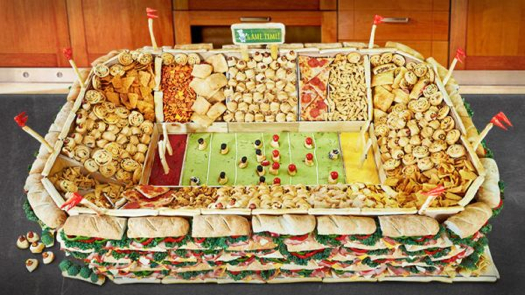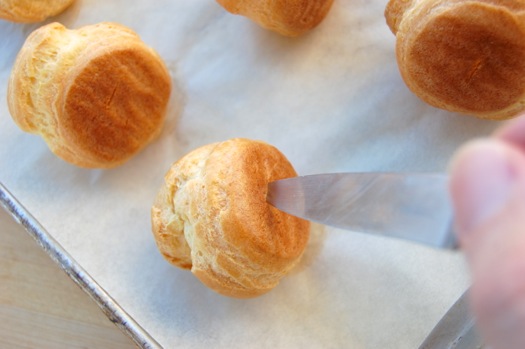Working, working…
Well the house has warmed back up again. Today’s complication is that little 6-year-old Joan Pastry has stomach flu. Oh, the laundry! However the croquembouche is proceeding again. More on that soon!
READ ONWell the house has warmed back up again. Today’s complication is that little 6-year-old Joan Pastry has stomach flu. Oh, the laundry! However the croquembouche is proceeding again. More on that soon!
READ ON
Winston Churchill famously defined a fanatic as a man who can’t change his mind and won’t change the subject. That was Thomas Paine, American revolutionary and probably my favorite character from American history. Why do I love Paine? Because he was, not to put too fine a point on it, a wacko. He was the archetypal disheveled, smelly revolutionary who would have been perfectly at home in any modern coffee shop, debating politics with guys in tie dies and rasta beanies. Also he was a master of compact prose. No one could put complex ideas into plain language like Tom Paine.
Like most American revolutionaries, Paine was born an Englishman. He was a failure at just about everything: as an apprentice in his father’s corset-making business, as a government employee, as a tobacco shop owner and as a husband. His one stroke of good luck was meeting Benjamin Franklin in London in 1774. Franklin suggested he quit England for the colonies. Paine was broke, divorced, out of favor politically and in danger of being thrown into debtor’s prison. Good time for an exit.
READ ONQuite a little ice storm we had here in Louisville last night. This semi-southern town isn’t built for such things. Case-in-point our power is out and won’t be back on — quite possibly — for a couple of days. Which means the pastry clan is headed out, either to a hotel or the floor of a friend’s house, whichever we can get! Now if you’ll excuse me I need to turn off the water and drain our plumbing system so our pipes don’t freeze overnight. More when I can, adventurers!
UPDATE: A cold house is terrible for your plants. Also, note to self: hook up the gas fireplace fixture that’s been disconnected since we moved in.
READ ONBelow we talked about how the pièce montée art form found new life in post-revolutionary Paris, particularly when practiced by Antonin Carême. That Carême took the “mounted piece” to new heights of sophistication and artistry is beyond dispute. However it’s also beyond dispute that even as Carême continued to produce one pièce montée masterpiece after another, the heyday of grand centerpiece was coming to an end. For changing politics were also bringing about a broader change in the way people ate.
In the glory days of the French aristocracy (and European aristocracy generally), formal dining occurred around grand tables. Food was brought in four or five huge services, from which diners served themselves. A single service could comprise a dozen or more items. First service consisted of soups, hors d’oeuvres and lighter meat dishes. Second service was
READ ON
I’d have to say yes, reader Brill. You still see them from time to time. Wedding cakes definitely fall into that category (croquembouche is a sort of wedding cake). The big novelty cakes you see on shows like Ace of Cakes and Cake Boss definitely count. Other than that, cocktail party ice sculptures spring to mind, but you really have to go to a major hotel buffet table to see a big mounted piece these days. The Superbowl notwithstanding, they’re pretty rare nowadays! (Thanks to Pillsbury for the photo)
READ ON
Reader Kevin, who I’m beginning to suspect is writing a term paper on the French Revolution, writes again to ask what led to the Reign of Terror. It’s another great question to which again there may be no easy answer. But I’m always up for flappin’ my fingers on the subject of history…I’ll give it a try. Jump in, proper historians, since I’m bound to slip up at some point here.
It’s popularly thought, at least here in the States, that the Terror happened in the immediate aftermath of the French Revolution of 1789. The peasants stormed the Bastille one day and started chopping off heads the next. In point of fact it did not happen that way. It took another four years from the time of the initial uprisings in Paris to the ascension of Maximilien Robespierre
READ ONReader Silviu asks: if your batter “breaks”, does it actually make any difference to the final product? That’s an excellent question, as it often happens that layer cake, muffin and tea bread batters take on a “broken” look during mixing, by which I mean a grainy appearance. That’s caused by very small droplets of fat floating around in the mixture. Though some bakers I’ve worked with insist that it’s a defect in the batter, I’ve never found a grainy texture to inhibit either rising or a good texture. To me it’s just one of those things that happens from time to time, especially in very buttery layer cake batters. I say: don’t worry about it.
READ ONAny time there’s a choux-based pastry on the blog, there are always a lot of calls for help with collapsing puffs. There are three fixes to the problem that I can think of. First, you can pipe higher. Which is to say, try to make your dough shapes a bit more vertical to begin with. You can achieve this in part by making sure you pipe your choux from a height of about half an inch above your surface. This way you “lay down” batter instead of spreading it.
Second, bake longer. Get a good brown on your puffs. This will make the walls of the pastry more rigid and less inclined to collapse. For larger shapes it’s a good idea to “vent” them by poking a hole in the bottom with a knife. This allows steam to escape and again helps the walls to dry out and remain rigid. Once you’ve done that you can return the puffs to the oven and turn the heat down
READ ONReader Goody (love that name!) says she can never get choux to rise well. The puffs brown but are moist on the inside and seldom have the very large spaces she wants. Goody, I can think of a couple of things you might try. First, when you’re making your choux, be sure to cook the batter long enough before you add the eggs. It could be that you’re not getting the starch breakdown you need to form a nice, elastic batter.
Another possibility is that the batter is too wet. If you’re using extra-large eggs the batter can become so slack that it puddles on the sheet and has a hard time lifting off. So make sure, in the mixing step, that your batter is always firm enough to stand up on its own. Stop and check after the third egg is completely incorporated. Stand a blob of batter on your finger. It should have no trouble holding its shape. If you’re
READ ON
Choux is a truly ingenious invention, though it almost certainly wasn’t “invented” in the classic sense of the word. It evolved, probably through decades, maybe even centuries, of trial and error. The secret of choux is that it’s “double cooked”, a process that imbues it with some very special properties.
If you’ve made éclair or cream puff shells before, you probably recall the process. Water and butter are combined in a sauce pan and heated to the boil, at which point enough flour is added to turn the mixture into a fairly stiff paste. That paste is then cooked over low heat until it forms a ball, which is then finished by beating in several eggs, one after the other. It’s then piped and baked (the second “cooking”). Interesting. Curious. But what does it all mean?
READ ON